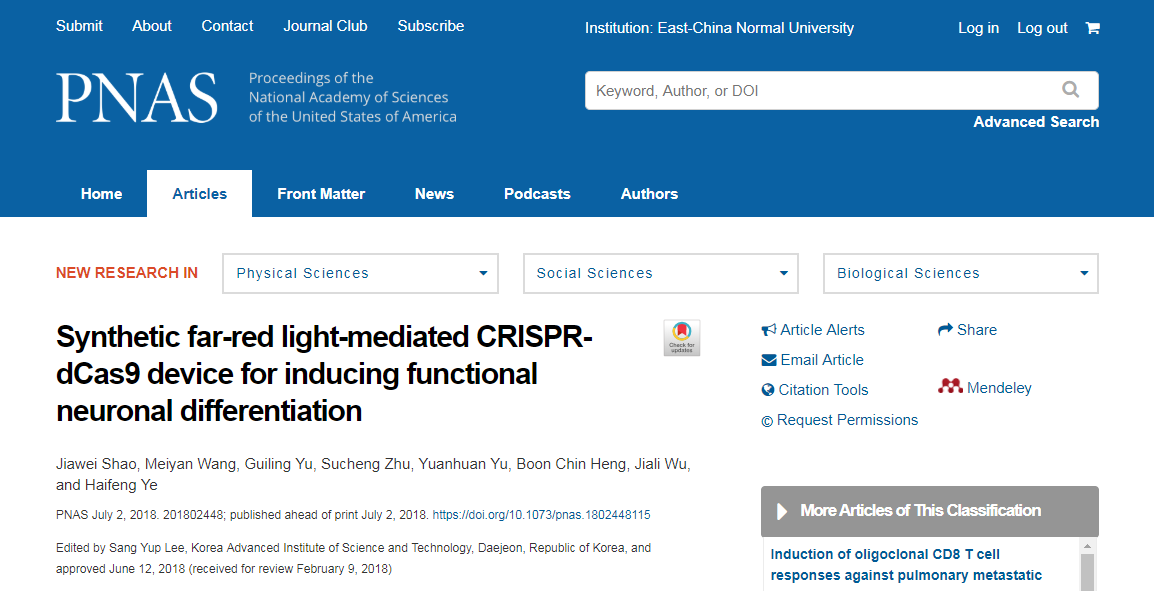ON Jul. 2, the world-renowned journal Proceedings of the National Academy of Sciences of the United States of America, PNAS, published the latest findings of a research team led by Ye Haifeng in an article named Synthetic far-red light-mediated CRISPR-dCas9 device for inducing functional neuronal differentiation.

Ye's team latest research results are published in PNAS online journal.
Researcher Ye Haifeng is the co-author of the articles, with his team members, Ph. D candidate Shao Jiawei and Yu Guiling, and associate researcher Wang Meiyan from ECNU as co-first authors.
Ye Haifeng’s team has developed an optogenetic far-red light (FRL)-activated CRISPR-dCas9 system (FACE) that is orthogonal, fine-tunable, reversible, and has robust endogenous gene-activation profiles upon stimulation with FRL, with deep tissue penetration capacity, low brightness, short illumination time, and negligible phototoxicity.

Schematic diagram of FACE device

Space-time specialty of FACE device
Their research is based on a versatile system to control the activity of CRISPR-dCas9 with precise spatiotemporal resolution that will enable genome regulation of user-defined endogenous genes for the purpose of studying the dynamics of transcriptional regulation.
They also found that these optogenetic devices are vital for precise spatiotemporal control of cellular behavior within deep tissues, which can be penetrated more easily with minimal phototoxicity. The clinical research involved with the work will be conducive to future studies in translational sciences.

Mice test to confirm gene expression of FACE device
Moreover, the FACE device is biocompatible and meets the criteria of safe medical application in humans - simply by utilizing a beam of FRL - that can provide a differentiation strategy for mass production of functional neural cells derived from pluripotent stem cells.

FACE device to induce iPSCS
This optogenetic device has expanded the precise capabilities of optogenetic functions in many areas of basic and translational research. For instance, studies in mammalian genome engineering requires precise spatiotemporal control of cellular behavior, which may in turn boost the clinical progress of optogenetics-based precision therapy.

Researcher Ye Haifeng and his team members.
Brief introduction of Ye Haifeng
Ye Haifeng conducted his Ph. D and post-doc study at ETH Zurich from 2007 to 2013 and returned to ECNU as a researcher and doctoral supervisor. Subsequently he has led his team towards publications in famous journals such as Science Translational Medicine, Nature Biomedical Engineering, PNAS, and Molecular Therapy. He now holds concurrent posts at the Synthetic Biology and Biomedical Engineering Laboratory and Shanghai Key Laboratory of Regulatory Biology, as well as the Institute of Biomedical Sciences and School of Life Sciences of East China Normal University.
Find out more: Synthetic far-red light-mediated CRISPR-dCas9 device for inducing functional neuronal differentiation
Edited by Wenjun Guo Proofread by Mayfield Joshua Reviewed by Jinyu Liu


















